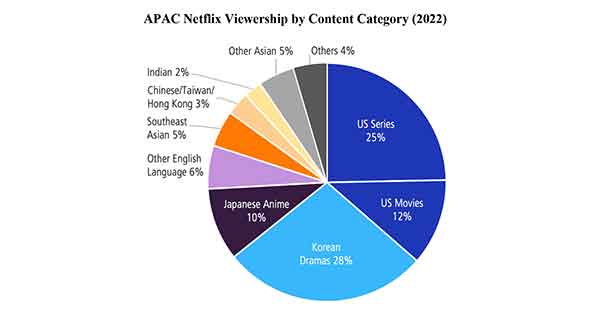As growth slows in the AsiaPac pay-TV sector, major branded channel operators are likely to reduce investments in local feeds, transmission operations and original content, according to Media Partners Asia’s (MPA) latest Asia Pacific Pay-TV Distribution report.
“Global and regional broadcasters are likely to focus more on licensing, studio/content production and D2C strategies, along with material M&A opportunities,” Vivek Couto, MPA’s executive director, tells World Screen Newsflash. As the major players scale back on their channel brand investments, “this may create opportunities for operators working with independent third-party content providers to consolidate and aggregate content across important genres with digital rights to serve pay-TV operators,” Couto adds.
Subscription fees and ad revenues for pay-TV companies in AsiaPac rose by 6 percent last year to reach $57 billion, but growth is expected to slow to a CAGR of 3 percent come 2024, reaching $66 billion. Pay-channel subscription fees will see a 2-percent CAGR to reach about $10 billion by 2024, while net advertising revenues will experience a 5-percent CAGR to reach $16 billion.
India is expected to be a key driver, with a 6-percent CAGR to reach revenues of $15 billion by 2024, making it the highest growth and most scalable pay-TV market in the region. “The pay-TV industry in India remains robust, especially for local and regional language pay channels,” Couto explains. “International content genres and consumption have moved online, driven by SVOD and AVOD models. Pay channel affiliate revenue growth will moderate to 4-percent CAGR between 2019-24, while advertising will grow at 10-percent CAGR over the same period. More M&A is expected as various deal structures drive consolidation among Sony, Viacom18 and Zee Entertainment.”
South Korea is projected to have a 3-percent CAGR to reach $8.3 billion. Japan will be largely flat, growing by 1 percent to reach $ 7 billion. “The branded pay channels market [in Japan] is important in terms of revenue scale for A+E, Discovery, Disney, Sony, Viacom and WarnerMedia,” Couto notes. “Each of these groups will retain key channels in the market but are actively focused on expanding the opportunity for licensing and syndication, the launch of D2C SVOD platforms, AVOD businesses, investment in production and M&A.”
Australia, Hong Kong, New Zealand, Malaysia, Singapore, Taiwan and Thailand will see pay-TV revenue declines of between 1 percent to 5 percent until 2024. Growth will moderate in the Philippines and Vietnam, MPA says.
In terms of subscriber numbers, the region as a whole added 12.8 million net new subs last year, almost half (47 percent) in India and 37 percent in China. Korea also saw gains, driven by telco IPTV, while pay-TV subscriber numbers fell in Australia, Hong Kong, Malaysia, New Zealand, Singapore and Thailand.
The total number of pay-TV subs in the region was up 2 percent in 2019 to reach 630 million, a 62-percent penetration rate. MPA is forecasting just a 1-percent CAGR through 2024, when the base will hit 663 million, a 63-percent penetration rate. Cord-cutting is expected to stabilize after 2021 in Australia, Hong Kong, Malaysia, New Zealand, Singapore and Thailand, following peak losses of almost 1 million subs across the six markets last year.
Couto stated: “Mushrooming consumer choice and piracy across the digital ecosystem has created cracks in the traditional pay-TV ecosystem. Business models remain dependent on the monetization of branded channels and sports rights in the pay-TV window. But the growth of legal online video services means that pay-TV operators and content providers are striving to distribute and monetize online. Inevitably, this strategy is being executed at a significant potential cost with the risk of cannibalization and growth at the expense of household-based pay TV. For pay-TV operators with a broadband business, such a strategy could lead to fresh opportunity as key players reaggregate new bundles of branded channels and OTT video. For others, long-term subscriber erosion is a reality with the emphasis on serving and retaining existing premium customers and managing content costs and where possible, entering into partnerships and M&A with telcos and broadband operators. Operators are increasingly focused on tighter bundles and packages, stronger brands and flexible options for customers, anchored to improved technology with online options. The pace of operator execution is uneven, however, which becomes time critical when measured against the impact of disruptive change and the management of legacy infrastructural costs.”
Find out more about MPA’s latest research here.
 TVASIA
TVASIA





